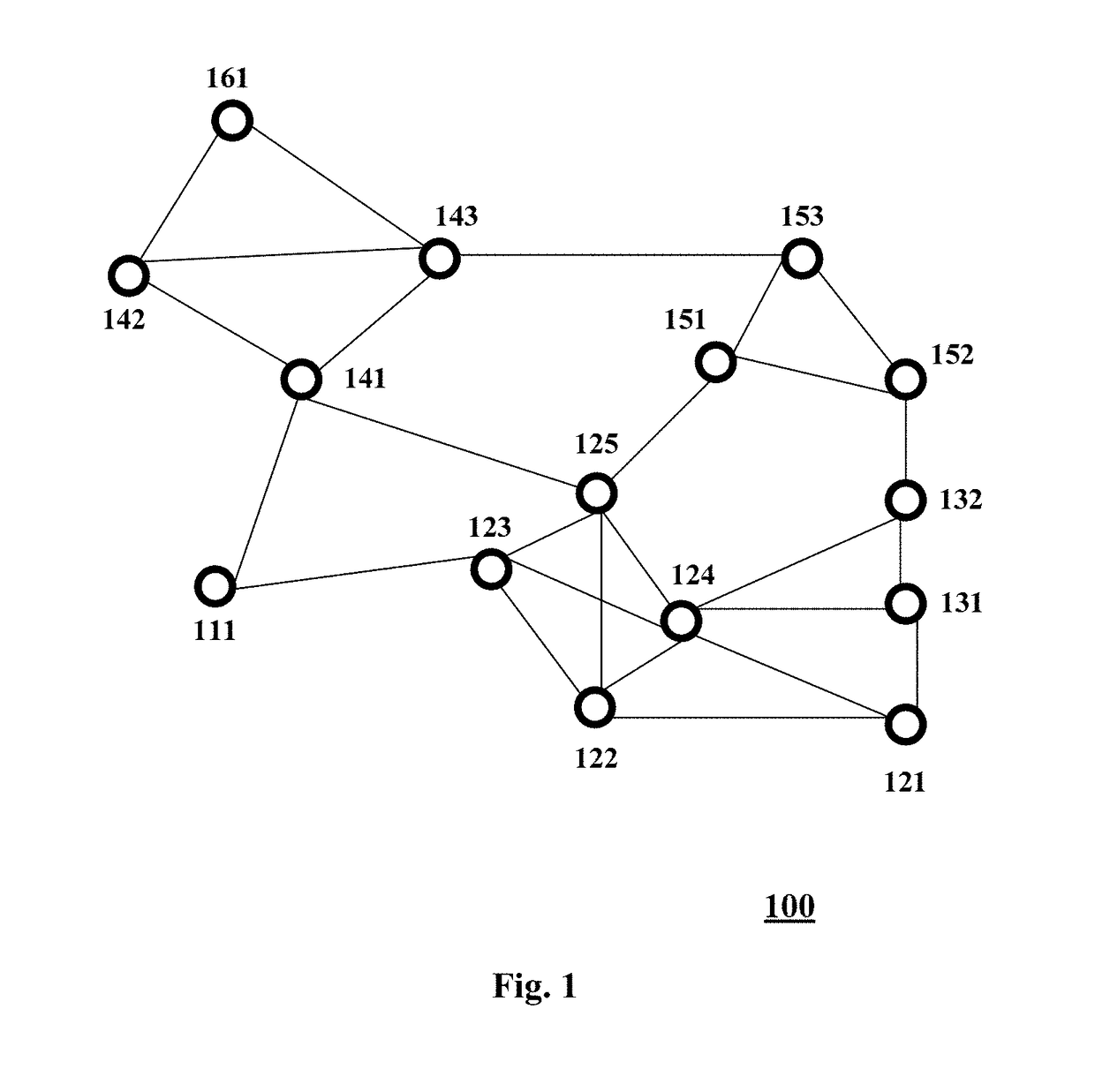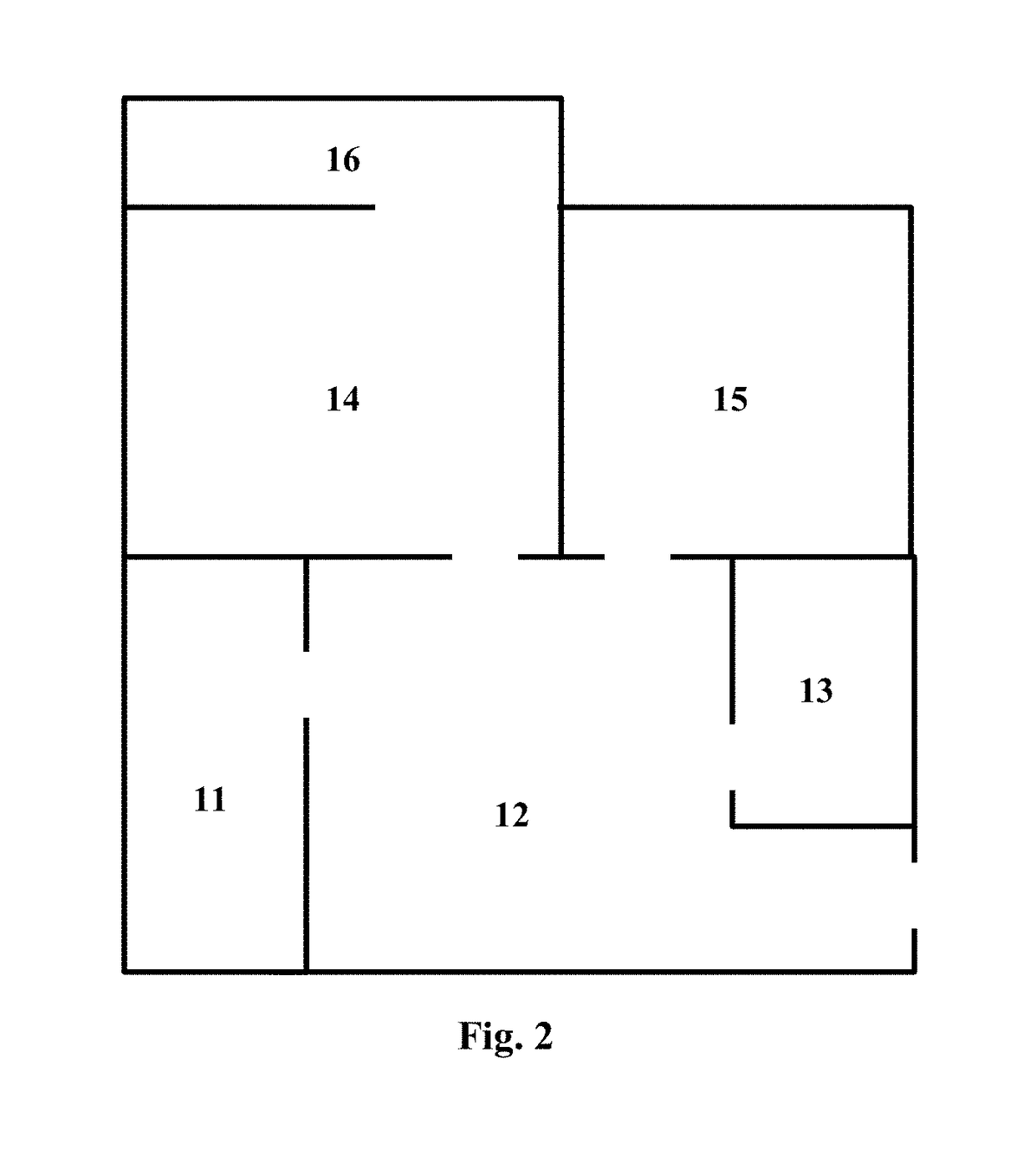Indoor wireless communication network and internet of things system
a wireless communication network and internet of things technology, applied in the field of communication technology, can solve the problems of consuming a lot of electrical power, unable to provide access to connectable devices having a high density, and still several technical bottlenecks, and achieve the effects of reducing the cost of electricity supply, and preventing the resolving of indoor wireless communication networks
- Summary
- Abstract
- Description
- Claims
- Application Information
AI Technical Summary
Benefits of technology
Problems solved by technology
Method used
Image
Examples
first embodiment
[0089]FIG. 1 is a schematic view of the indoor wireless communication network according to the present invention. By way of example, it is assumed that the indoor wireless communication network shown in FIG. 1 is built inside a residence unit shown in FIG. 2.
[0090]For ease of description, different areas of the residence unit are identified by two-digit numbers in FIG. 2; for example, 11 represents the kitchen, 12 represents the living room, 13 represents the bathroom, 14 and 15 represent the bedroom, and 16 represents the balcony. Correspondingly, the LED lighting device in each area is identified by a three-digit number, wherein the first two digits represent the area number and the last digit represents the serial number of the LED lighting device in this area.
[0091]In this embodiment, the wireless communication modules serving as the network nodes of the indoor wireless communication network is built in the adaptive power supply of the LED lighting device so that these nodes can...
second embodiment
[0101]FIG. 3 is a schematic diagram of the indoor wireless communication network according to the present invention.
[0102]In this embodiment, the indoor wireless communication network 310 comprises wireless communication modules 311A-311F serving as wireless access nodes and a wireless communication module 312 serving as the sink node, wherein the wireless communication modules 311A-311F are built into the adaptive power supply of an associated LED lighting device, and the wireless communication module 312 may be built into the adaptive power supply of an associated LED lighting device or may be arranged at a different physical location than the LED lighting device. The wireless communication module 312 may exist as an independent wireless communication device, for example, and may also be integrated into various devices such as, but not limited to, router, POS machine, power adapter, home base station, modem, set-top box, household appliance and PC machine or the like.
[0103]As show...
third embodiment
[0105]FIG. 4 is a schematic view of a wireless communication network built based on the indoor wireless communication network according to the present invention.
[0106]The wireless communication network 400 according to this embodiment comprises two indoor wireless communication networks 410 and 420, each of which comprises wireless access nodes and sink nodes, wherein the wireless access nodes are built into the adaptive power supply of an associated LED lighting device, and the sink nodes may be built into the adaptive power supply of an associated LED lighting device or may be arranged at a different physical location than the LED lighting device. The sink nodes may exist as independent wireless communication devices, for example, and may also be integrated into various devices such as, but not limited to, router, POS machine, power adapter, home base station, modem, set-top box, household appliance and PC machine or the like.
[0107]As shown in FIG. 4, a direct communication connec...
PUM
 Login to View More
Login to View More Abstract
Description
Claims
Application Information
 Login to View More
Login to View More - R&D
- Intellectual Property
- Life Sciences
- Materials
- Tech Scout
- Unparalleled Data Quality
- Higher Quality Content
- 60% Fewer Hallucinations
Browse by: Latest US Patents, China's latest patents, Technical Efficacy Thesaurus, Application Domain, Technology Topic, Popular Technical Reports.
© 2025 PatSnap. All rights reserved.Legal|Privacy policy|Modern Slavery Act Transparency Statement|Sitemap|About US| Contact US: help@patsnap.com



